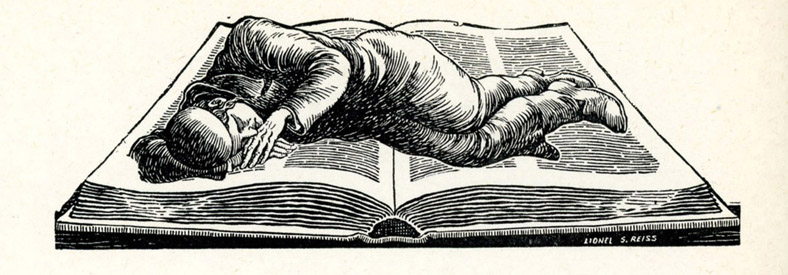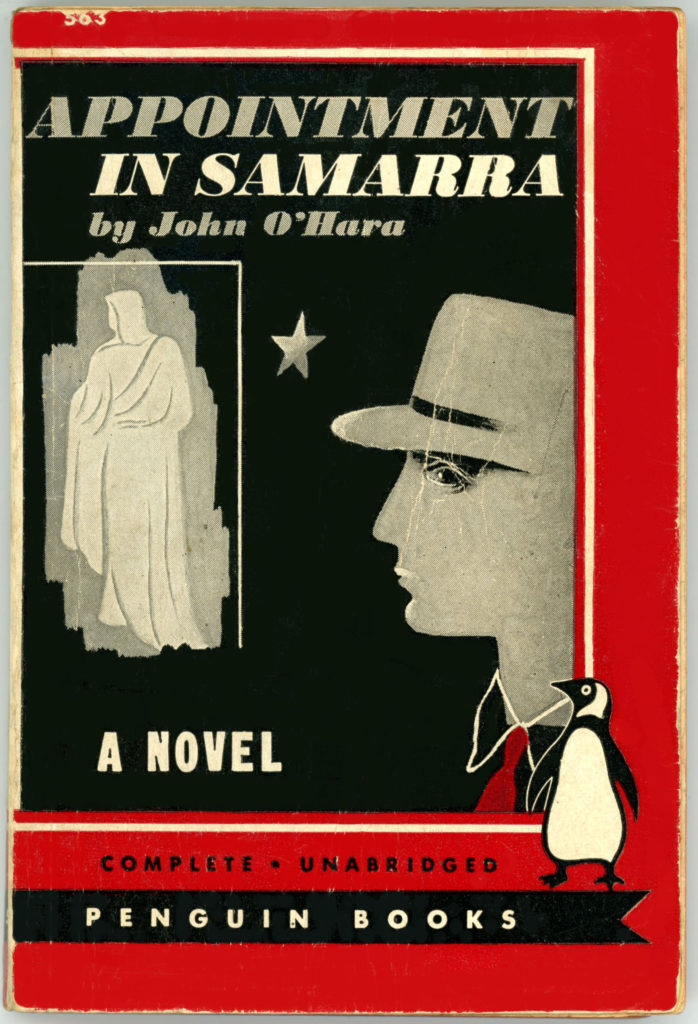“The wind came from nowhere … a super-hurricane that blasted round the globe at hundreds of miles per hour burying whole communities beneath piles of rubble, destroying all organized life and driving those it did not kill to seek safety in tunnels and sewers – where they turned against each other in their desperate struggle to survive …”
When in 1974 Penguin Books published J.G. Ballard’s novels The Wind From Nowhere, The Drowned World, The Drought, and The Terminal Beach, the cover artist for each volume was David Pelham, who served as Art Director at Penguin from 1968 to 1979.
All four covers share the same style: A central object – an army tank; a building; a nuclear bomb (“fat-man”, to be specific); an automobile (well, at least the tail fins of an automobile!) – is rendered in almost photographic crispness as the central object of the composition, yet simplified to such an extent that minor technical details, surface textures, and the “dings and dents” and imperfections natural to any well-used man-made object are entirely absent.
And… The objects are rendered in shades of yellow, orange, and red, utterly and deliberately unlike their actual colors. The color shading of each (for example, take a close look at the tank turret, below…) it looks as if much of the painting was done via airbrush.
And yet… That’s all there is. Other than backgrounds in shades of violet, orange, and blue, there’s nothing else. No people; no background scenery; no spacecraft; no planets, stars, or galaxies floating in the distance.
And even more… The “objects” are positioned in each painting in a position that symbolizes the obsolescence, powerlessness, and irrelevancy of man’s technical and architectural creations, in a world of impersonal forces transcending human understanding and control.
Look at the cover below. It shows a British Centurion main battle tank (to be specific, an early version of the tank), of about 52 tons weight, the design of which dates back to the mid 1940s. And yet, it’s suspended in space, tossed in mid-air, irrelevantly leaf-like, very much by The Wind From Nowhere.
To give you a clearer idea, here’s a nicely done scale model of a Centurion tank, showing how closely Pelham followed the actual vehicle’s design and shape, and his simplification or removal of small details. Well, this image also gives you a nice view of the “top” of the tank, too!
The book’s rear cover. All four 1974 Penguin books feature an explanatory blurb, a Penguin penguin set on a purple oval, and nothing else. No excerpts; no reviewer’s quotes; no plugs for other books. Simple and stark, like the front cover.
You can view the cover art of Penguin’s other 1974 editions of Ballard’s work at David Pelham: The Art of Inner Space (from 2012), where Pelham discusses working with J.G. Ballard, influences on his cover designs, and aspects of working at Penguin.
You can view the visual influences on the other three 1974 covers at the links below:
The Drought – Inspired by Cadillac Ranch (April, 1974)
The Drowned World – Inspired by Chrysler Building in New York City (1974)
The Terminal Beach – Inspired by “Fat Man” atomic bomb (plutonium implosion weapon) (1974)
Plus… Also from The Art of Inner Space, here Pelham’s design for the SlipCase for Penguin’s Boxed set of Ballard’s four novels. Continuing with a theme of technology juxtaposed against the natural world (note that the plane isn’t just embedded in the earth, the port wing is broken, too!), the cover “object” is a “beached” American B-29 Superfortress very heavy WW II bomber. Interestingly, the plane’s insignia are an accurate representation (except for the nose art) of the striped tail markings of a B-29 of the 45th Bomb Squadron, 40th Bomb Group, 20th Air Force, the “Eddie Allen”, which bore tail letter “M”.
(Atomic bomb? Centurion tank? B-29 Superfortress Pelham seems to have had an intriguing focus on military technology!)
 Here’s the real “Eddie Allen”, serial number 42-24578, in flight, in Army Air Force Photograph 75743AC / A45756).
Here’s the real “Eddie Allen”, serial number 42-24578, in flight, in Army Air Force Photograph 75743AC / A45756).
–
 And, a painting of “Eddie Allen” during a bombing mission, from the flickr photostream of Robert Sullivan.
And, a painting of “Eddie Allen” during a bombing mission, from the flickr photostream of Robert Sullivan.
Biography of James G. Ballard, at Wikipedia
The Wind From Nowhere, at Wikipedia
David Pelham: The Art of Inner Space, at Ballardian
Cover Illustrations by David Pelham, at Science Fiction Book Art
Centurion Tank, at Wikipedia
Centurion Tank, at Tank Nut Dave
Tamiya 1/35 Centurion Mk III Tank (plastic model), at IModeler











